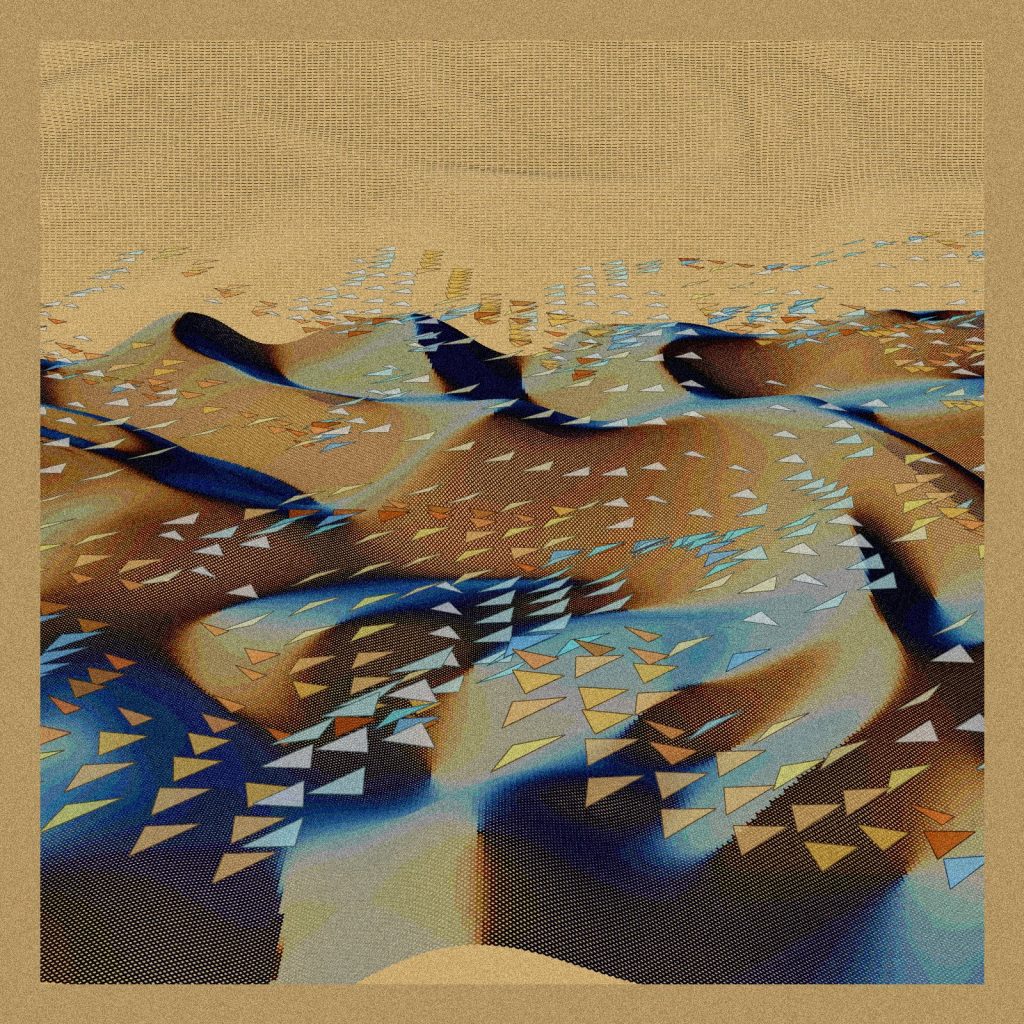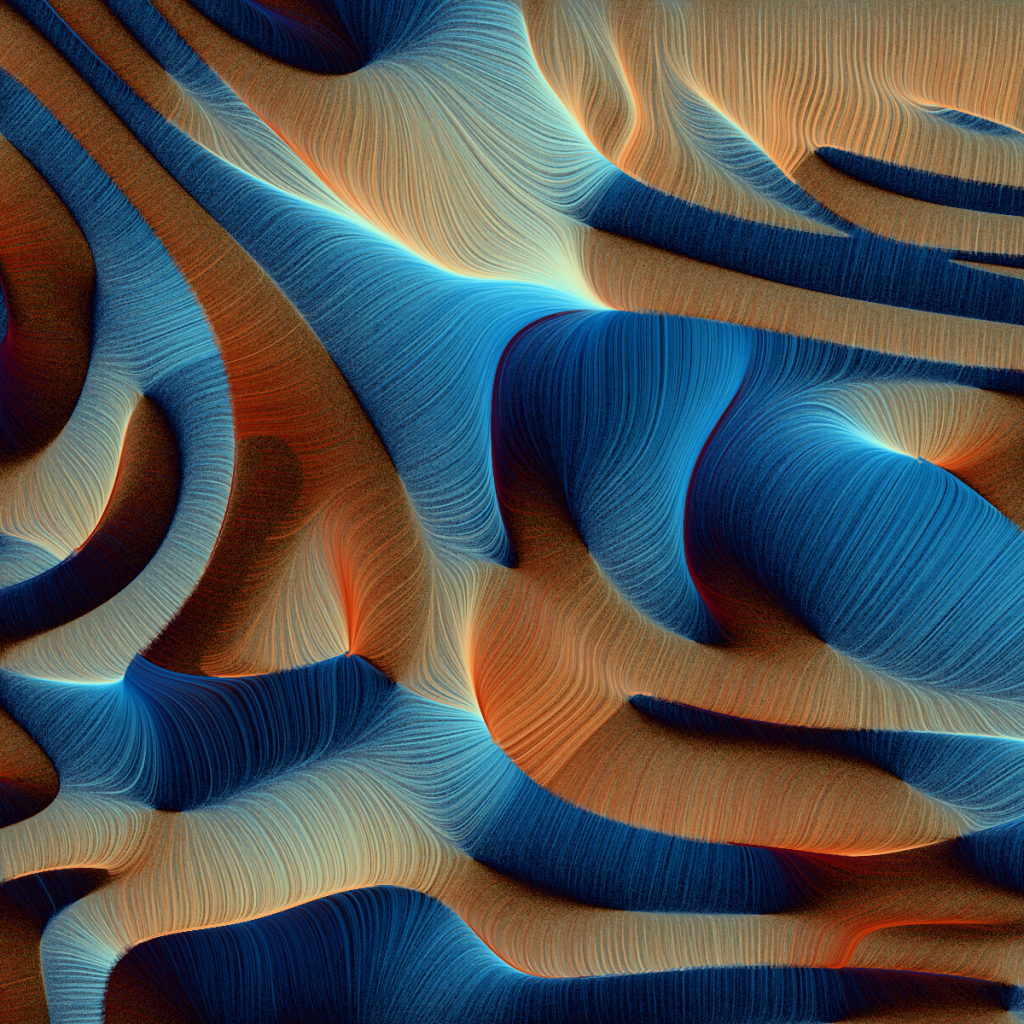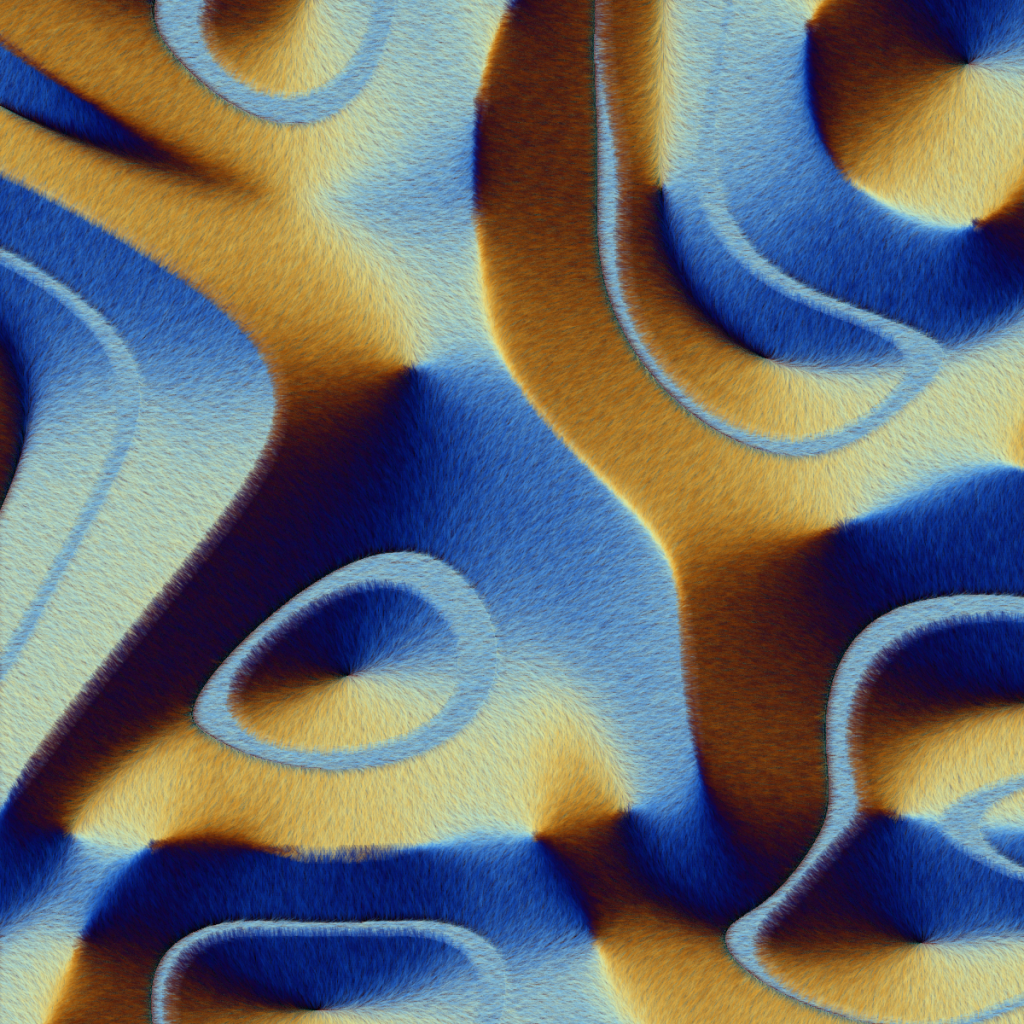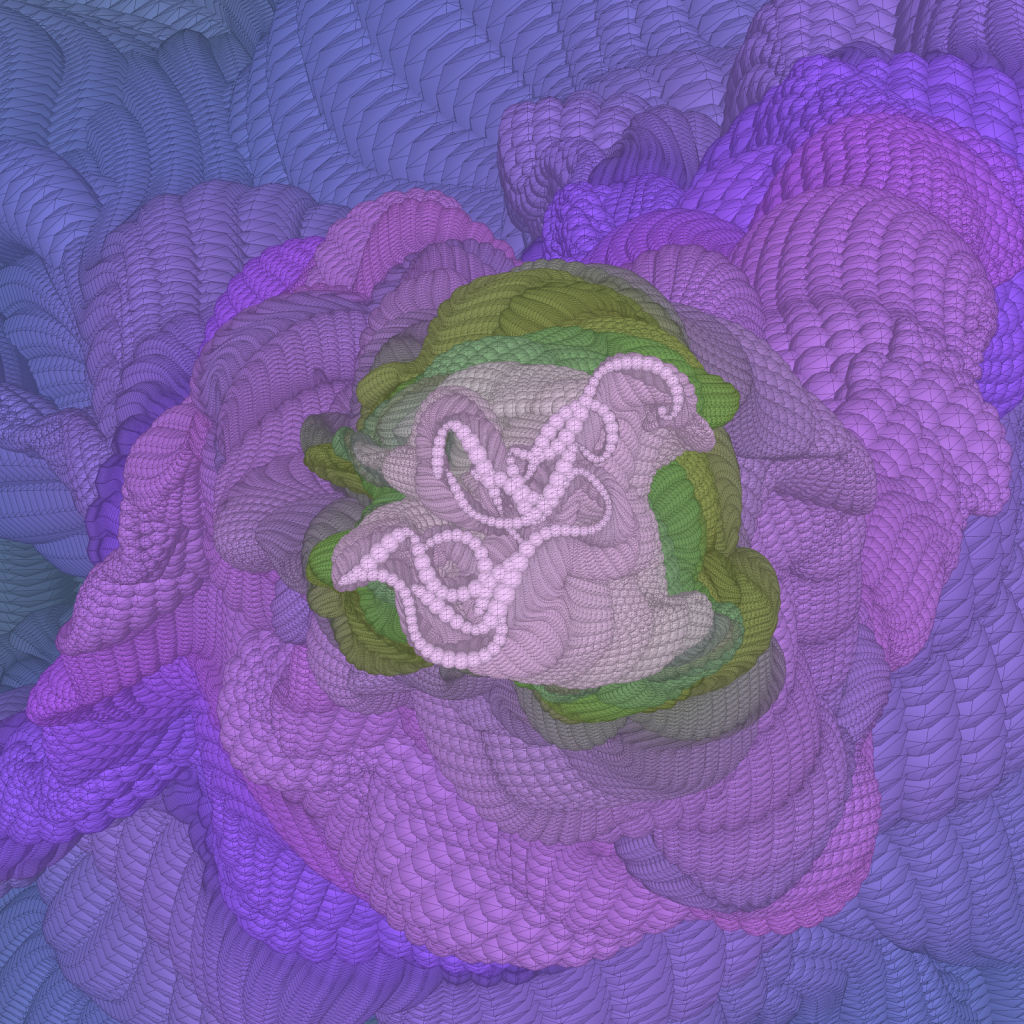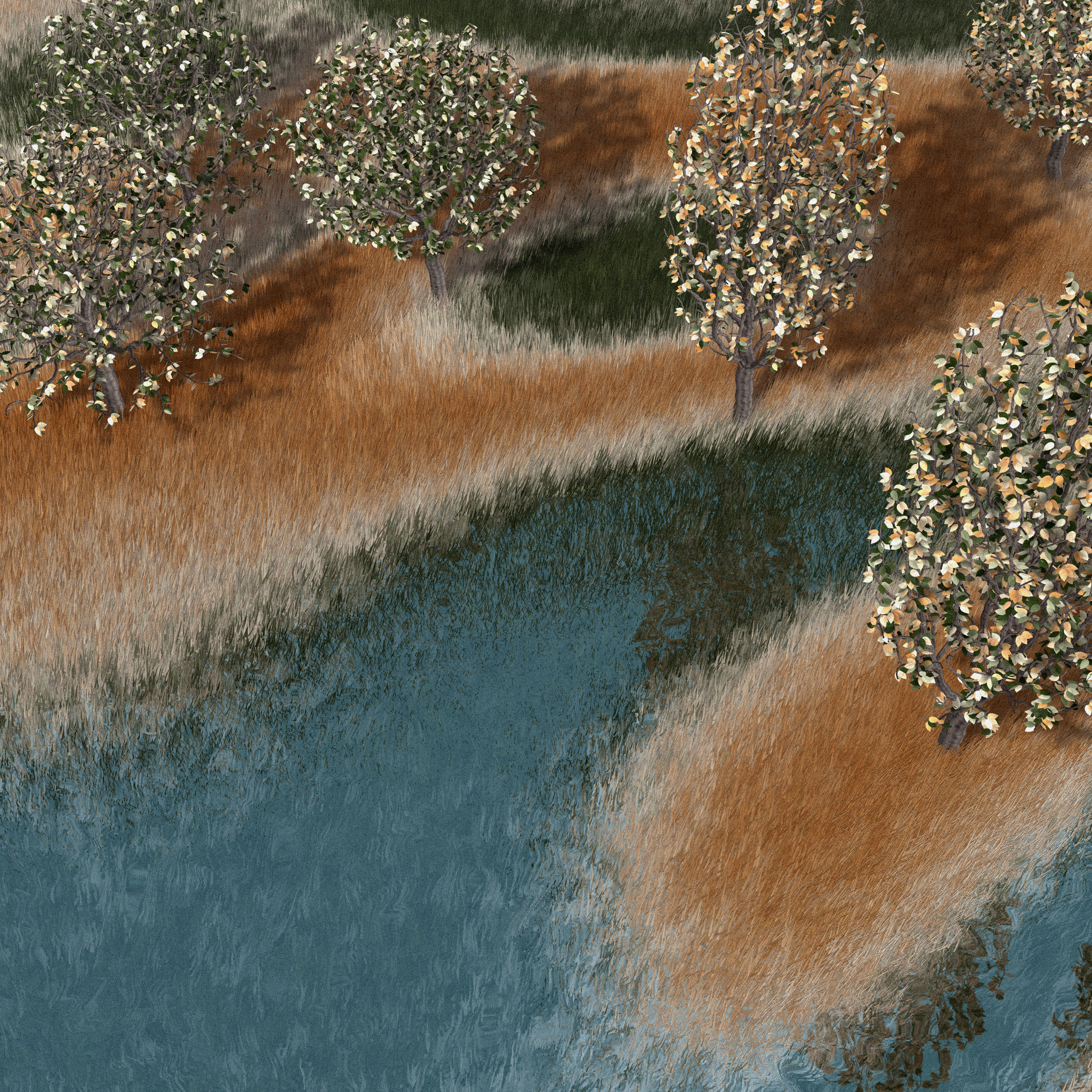
In this work, the third in the series of landscapes, I tried to achieve greater realism without abandoning those elements, also characteristic of the other works, which lead out of reality such as the shapes of the ground and trees and the choice of palettes.
Lands and Clouds are rendered using a mix of simplex noise and FBM (Fractional Brownian Motion), trees are generated with space colonization algorithm an placed using Poisson Disk Sampling distribution. The distribution density is driven by the land heightmap.
Developed with three.js using WebGLRenderer.
Rendering is faster with chrome browser.
[s] to save a png at 2048×1536, 1536×2048, 2048×2048 (4/3, 3/4, 4/4 aspect ratio)
[d] to save a png at 4096×3072, 3072×4096, 4096×4096 (4/3, 3/4, 4/4 aspect ratio)
Features:
“Palette”: 14 colormaps
“Aspect Ratio”: 4/3, 3/4, 4/4
“View Point”: Far, Medium, Near, Above
“Sky Type”: FBM, Gradient1, Gradient2
“Sky Color”: LightSkyBlue, Gray, Blue [10% probability]
“Bark Color”: Brown, GrayBrown, Gray
“Bare Trees”: True, False
Created by Andrea Belloni, fxhash: anbello, twitter: @Waterflowing0. Licensed under CC BY-NC-SA 4.0, see LICENSE.txt for more information.
https://www.fxhash.xyz/generative/slug/landscapes-out-of-my-mind


